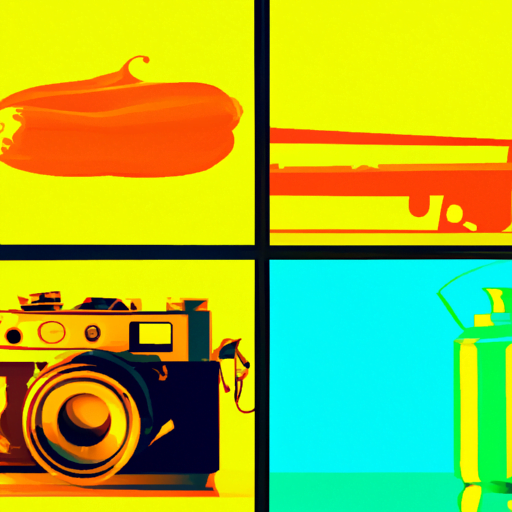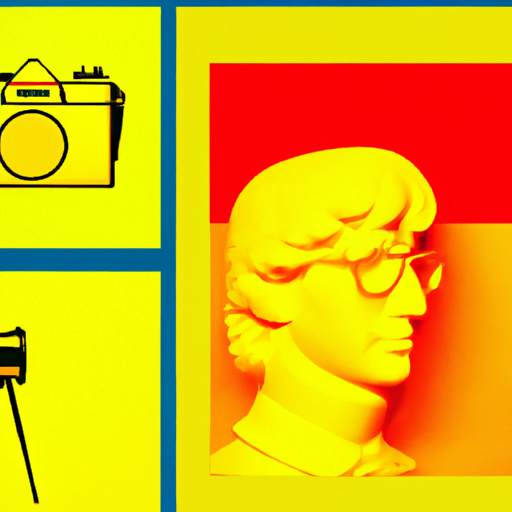
-
Table of Contents
- The Power of Visual Metaphors in Design
- What is a Visual Metaphor?
- The Power of Visual Metaphors in User Experience Design
- Creating Memorable Brand Identities with Visual Metaphors
- Communicating Ideas Effectively with Visual Metaphors
- Case Studies: The Power of Visual Metaphors in Design
- 1. MailChimp
- 2. Airbnb
- 3. WWF
- Key Takeaways
- Conclusion
The Power of Visual Metaphors in Design

Design is a powerful tool that can communicate complex ideas and emotions in a simple and intuitive way. One of the most effective techniques designers use to convey meaning is through visual metaphors. Visual metaphors are powerful because they tap into our subconscious and evoke emotions and associations that go beyond the literal representation. In this article, we will explore the power of visual metaphors in design and how they can enhance user experience, create memorable brand identities, and communicate ideas effectively.
What is a Visual Metaphor?
Before diving into the power of visual metaphors, let’s first define what they are. A visual metaphor is a design element that represents an abstract concept or idea by using a visual analogy. It is a way of connecting the unfamiliar with the familiar, making it easier for the audience to understand and relate to the message being conveyed.
Visual metaphors can take many forms, including symbols, icons, illustrations, and even typography. They can be found in various design disciplines, such as graphic design, web design, advertising, and branding. When used effectively, visual metaphors can create a strong emotional connection with the audience and leave a lasting impression.
The Power of Visual Metaphors in User Experience Design
User experience (UX) design plays a crucial role in creating intuitive and engaging digital experiences. Visual metaphors are an essential tool in the UX designer’s arsenal as they help users navigate and understand complex interfaces more easily.
For example, consider the use of the “trash can” icon to represent the action of deleting a file. This visual metaphor is universally understood, even by users who are not familiar with the specific interface. By using a visual metaphor, the designer eliminates the need for lengthy explanations or text labels, making the user experience more intuitive and efficient.
Visual metaphors can also enhance the emotional connection between the user and the product or service. For instance, a travel booking website might use a visual metaphor of a suitcase to represent the idea of exploration and adventure. This metaphor not only communicates the purpose of the website but also evokes positive emotions associated with travel, making the user more likely to engage with the platform.
Creating Memorable Brand Identities with Visual Metaphors
A strong brand identity is crucial for businesses to differentiate themselves in a crowded marketplace. Visual metaphors can play a significant role in creating memorable and impactful brand identities.
Take the example of the Nike “swoosh” logo. The swoosh is a visual metaphor for movement and speed, aligning perfectly with Nike’s brand values of athleticism and performance. This simple yet powerful visual metaphor has become synonymous with the brand and instantly recognizable worldwide.
Another example is the Apple logo, which features a bitten apple. This visual metaphor represents knowledge and the forbidden fruit from the story of Adam and Eve. It conveys Apple’s brand values of innovation, creativity, and the pursuit of knowledge.
By using visual metaphors in their brand identities, companies can create a strong emotional connection with their target audience and differentiate themselves from competitors.
Communicating Ideas Effectively with Visual Metaphors
Visual metaphors are not limited to branding and user experience design. They can also be used to communicate complex ideas and concepts in a simple and accessible way.
For example, in a climate change campaign, a visual metaphor of a melting ice cube can effectively convey the urgency and impact of global warming. This simple image can evoke emotions and associations that go beyond the literal representation, making the message more memorable and impactful.
Visual metaphors can also be used in data visualization to make complex information more digestible. For instance, a bar chart that uses visual metaphors of skyscrapers can represent the growth of a city’s population over time. This metaphorical representation not only makes the data more engaging but also helps the audience understand the information more easily.
Case Studies: The Power of Visual Metaphors in Design
Let’s explore a few case studies that demonstrate the power of visual metaphors in design:
1. MailChimp
MailChimp, an email marketing platform, uses a visual metaphor of a friendly chimpanzee in its logo and branding. The chimpanzee represents the playful and approachable nature of the brand, making it more relatable to users. This visual metaphor has helped MailChimp establish a strong brand identity and stand out in a competitive market.
2. Airbnb
Airbnb, a platform for booking accommodations, uses a visual metaphor of a simple, stylized house in its logo. This metaphor represents the idea of home and hospitality, aligning perfectly with Airbnb’s brand values. The visual metaphor helps create an emotional connection with users and communicates the purpose of the platform effectively.
3. WWF
The World Wildlife Fund (WWF) uses a visual metaphor of a panda in its logo and branding. The panda represents endangered species and the need for conservation. This visual metaphor not only communicates the mission of the organization but also evokes emotions and associations that resonate with the audience.
Key Takeaways
- Visual metaphors are powerful design elements that can convey complex ideas and emotions in a simple and intuitive way.
- They enhance user experience by making interfaces more intuitive and efficient.
- Visual metaphors can create memorable brand identities and differentiate businesses in a crowded marketplace.
- They can be used to communicate ideas effectively and make complex information more digestible.
- Case studies demonstrate the power of visual metaphors in design, such as MailChimp, Airbnb, and WWF.
Conclusion
Visual metaphors are a powerful tool in design that can enhance user experience, create memorable brand identities, and communicate ideas effectively. By tapping into our subconscious and evoking emotions and associations, visual metaphors leave a lasting impression on the audience. Whether it’s a simple icon or a complex illustration, visual metaphors have the power to transcend language and cultural barriers, making them a valuable asset for designers in various disciplines. By understanding the power of visual metaphors and incorporating them into our designs, we can create more impactful and engaging experiences for users.
